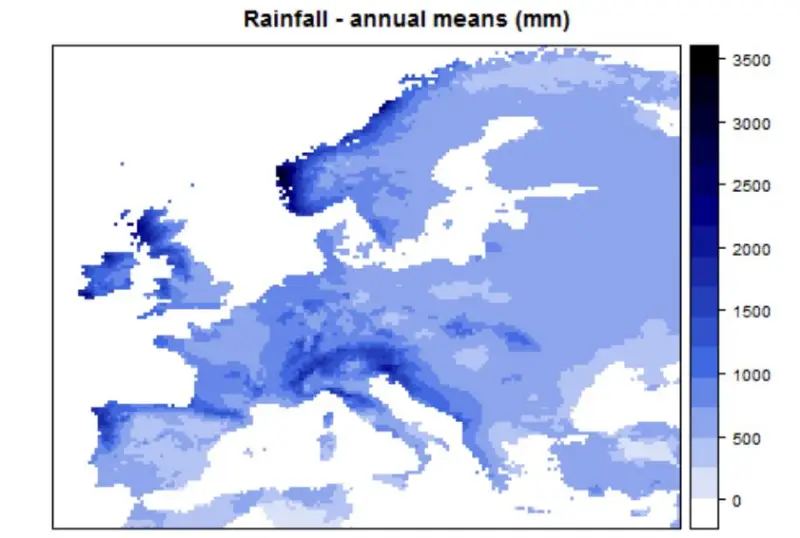Can Scotland become a mega-battery for the whole of Europe?
When it comes to green “batteries”, there’s more than just the conventional Li-Ion batteries you can find in EVs.
There are much larger, gravity-based mega-batteries known as Pumped-Storage Hydro (PSH) that draw inspiration from hydroelectric power to focus on storing off-peak energy.
It happens that Scotland has incredible potential for PSH schemes, and given its growing track record as a green energy powerhouse, it looks like all the right ingredients are now in place…
In this article we explore Scotland’s potential to become a dominant energy storage superpower through a series of PSH mega-projects that have been proposed by an anonymous “scottish scientist“!
Contents
- A water-based gravitational battery
- Scotland and its PSH potential
- Satoshi-style Scottish PSH schemes
- The Strathedan Mega-battery
- The Storage – Renewables flywheel
- Conclusion
A water-based gravitational battery
Our Twitter feed shows how people still associate rechargeable energy storage with traditional chemical batteries. While this is true for small mobile devices like phones and laptops, it is NOT the case for storing utility-scale energy. In this case, a distinct form of hydroelectric power reigns supreme.
During times of excess wind and solar power generation, the surplus energy can be used to pump water into an upper reservoir, storing it as gravitational potential energy. When electricity is needed, the water is released to drive turbines and generate electricity.
This technology is known as Pumped-Storage Hydro (PSH) and constitutes the vast majority of global green electricity storage capacity. PSH systems offer significant advantages over other types of storage, including the fact that there are no associated carbon emissions.
PSH systems can be lucrative, generating revenue from selling green electricity, issuing carbon credits and engaging in electricity arbitrage just like the Dynowig PSH project in Wales.
Scotland and its PSH potential
Persistent rainfall is a cornerstone of Scottish idiosincracy, and may now prove a remarkable opportunity to become a giant green battery. Scotland ranks among the rainiest places outside the tropics, ensuring abundant water resources for large-scale water-dependent infrastructure.

Also, the Scottish highlands are composed of ancient rock formations that are strong and can serve as ideal foundations for large infrastructure like PSH dams. The landscape is so old that weather has eroded its once huge peaks and turned them into smooth mountains that present fewer geohazards like landslides in comparison to the Alps, Himalayas or Andes.
Moreover, Scotland has been quietly emerging as a renewable energy powerhouse, amassing a substantial proportion of the UK’s wind power capacity. All while maintaining century-old micro-hydro schemes that have been generating electricity non-stop for almost a century!
While some may attribute this progress to a technocratic Scottish government, others think it’s the influence of an oil and gas industry that is gradually embracing the energy transition and have chosen Scotland as a testing ground for their ventures.
Satoshi-style Scottish PSH schemes
In the realm of cryptocurrencies, the anonymous Satoshi Nakamoto is the mysterious genius behind Bitcoin and has revolutionized our understanding of money. Recently, we came across an astute individual known as the ‘Scottish Scientist’ who has spent decades pioneering Scotland’s journey towards becoming an energy storage powerhouse.
The bold plans devised by this individual predate any extensive studies on Scotland’s PSH potential. Notably, the theoretical Strathedan project showcased on the anon’s website, establishes a working blueprint of the world’s largest energy storage scheme, which quite frankly left us captivated by its scale and ambition.
The Strathedan Mega-battery
The theoretical Strathdearn PSH [marked as (1) on the map above] defies existing conventions of a nature-based gravitational batteries, as could theoretically achieve a staggering 6,800 GWh of long-duration storage.
To put this into perspective, this is equivalent to roughly ten days of the total electricity generation of the UK, more than enough to liberate the grid from its current deadlock by efficiently storing any excess renewable power.
The magnitude of this vision extends far beyond Scotland’s borders, as Strathdearn would possess the capability to store surplus energy from across Northern Europe because it is within 1000km of Denmark, the Netherlands, Belgium, Germany and France, all whom have significant interconnector capacity with the UK (and Scotland by extension!).
Scotland could emerge as the premier energy storage hub for half a continent, encompassing wind power harnessed from the gusty shores of Denmark, or the freezing shores of Norway.
This transformation would grant Scotland unprecedented political influence by monopolising the clean electricity sector which is gradually becoming paramount for renewables. And the potential for generating billions of pounds in income, something significant to a small Scottish population.
Coire Glas PSH

In contrast to the theoretical Strathedan, the Coire Glas project near Fort William is currently under development with a £100 million investment from SSE, a major energy company. The total construction cost is estimated at £1.5 billion, and the scheme is scheduled to be commissioned by 2029.
Even though it’s significantly smaller than what is theoretically possible, Coire Glas is still poised to revolutionise Britain’s energy storage capabilities by delivering 30 GWh of long-duration storage, enough to power the entirety of the UK for two hours (Figuratively of course, No single PSH project would be able to release the energy fast enough to actually support the entire nation!).
In any case, SSE’s Coire Glas will bolster the UK’s resilience against any oncoming black swans. For example, a commonly cited attack vector are sabotage missions to severe international interconnectors or disrupting offshore wind power.
As the first pumped hydro storage scheme to be constructed in the UK in 40 years, it’s certainly exciting news…
The Storage – Renewables flywheel
By expanding its storage capacity, Scotland can facilitate the growth of its already thriving renewables sector because it would give excess renewables a useful place to go! Consider that the primary blocker facing new wind and solar farms is the lengthy waitlist for grid connections: a true gridlock in the grid.
Furthermore, new Pumped-Storage Hydro (PSH) create a new extensive water body in the form of reservoirs, which can improve water security and provide habitat for migratory birds and more. But more pertinently, it creates the perfect surface to install floating solar panels or small-scale floating wind farms whose energy can be used directly on-site without any transmission losses.
This “flywheel” effect magnifies the impact of large-scale storage systems like the ones proposed for Scotland, creating an exponential effect on the renewable energy landscape.
Conclusion
Scotland’s unique geography, ample water resources and historical relationship with renewables are shaping it as a potential global energy storage powerhouse.
The ambitious Strathdearn (100% theoretical) and Coire Glas Pumped-Storage Hydro (100% in development) schemes could transform the nation into the UK’s and Northern Europe’s green “battery,” storing and supplying renewable energy on an unprecedented scale.
This increased storage capacity will fuel the growth of Scotland’s and the UK’s renewable sector, providing continuous demand for energy and incentivizing new wind and solar projects.
In a nutshell, Scotland’s energy future is as vast as its landscapes, with the potential to redefine its economic and energy independence and position it as a leader in the global green energy transition. And would energy independence translate to actual independence?
External Resources
- Researchgate – Eluwa, C
- SSE – Company Website
- SSE – Britain’s largest pumped hydro scheme in 40 years gets £100m investment boost
- Scottish Scientist – Search for sites
- Scottish Scientist – Stredethan
- Scottish Scientist – Scaling 3 PSH in Scotland
- Scottish Scientist – Glasa Morie
- Wikicommons – LochMorie
- BBC – Coire Glas
- PSH in Scotland Maps
- ANU PSH inventory
- CEIC

